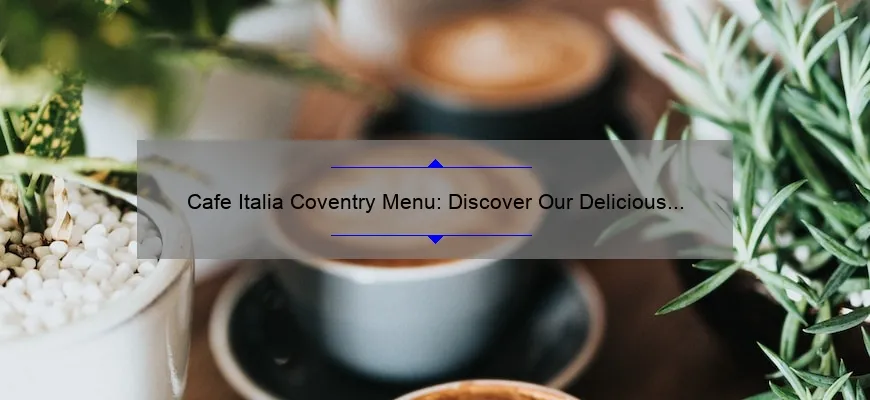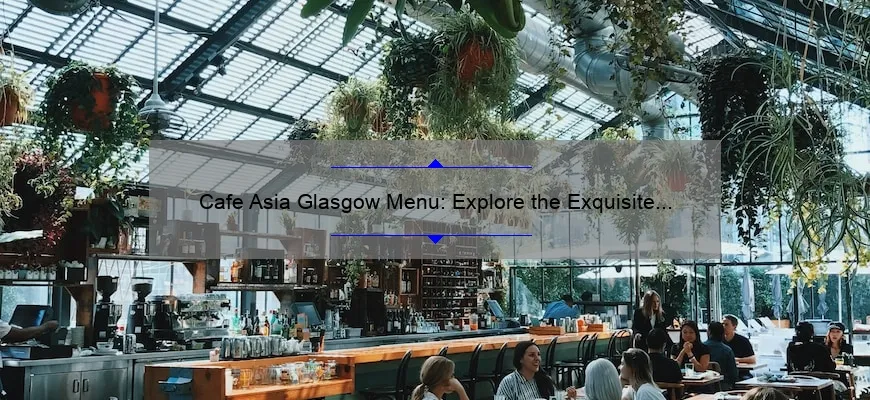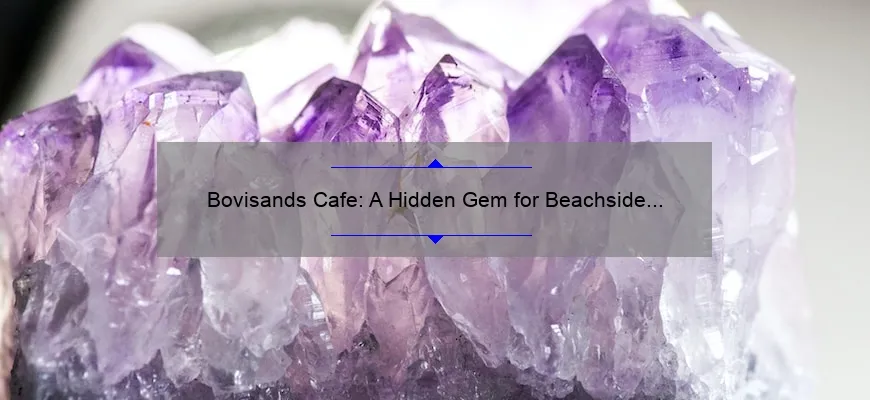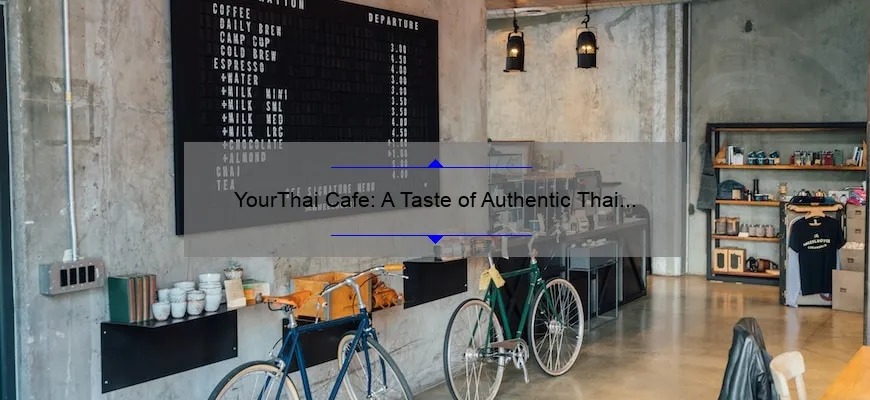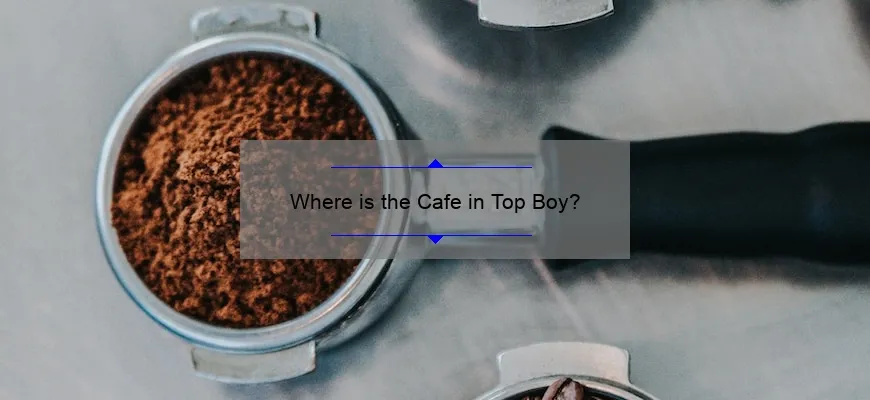- Short answer third wave cafe:
- How to Embrace the Third Wave Coffee Culture at Your Local Cafe
- Step 1: Get Acquainted with Your Local Café
- Step 2: Know What You Like – and Don’t be Afraid to Ask Questions
- Step 3: Enjoy the Ritual
- Step 4: Take Advantage of Tastings and Work
- A Step-by-Step Guide to Crafting an Authentic Third Wave Coffee Experience
- Frequently Asked Questions About Third Wave Cafes Answered
Short answer third wave cafe:
Third Wave Cafe refers to a recent trend in specialty coffee, where the focus is on transparency and innovation in sourcing, roasting and brewing with an increased appreciation for the unique flavors of specific beans. Many Third Wave Cafes operate on a direct-trade model with farmers and prioritize sustainable practices throughout their supply chain.
How to Embrace the Third Wave Coffee Culture at Your Local Cafe
Coffee has become an integral part of our daily routine, and we take it for granted that we can simply walk into our nearest coffee shop and order a basic Cup of Joe. However, if you’re a coffee-lover who is looking to elevate their experience and taste the true essence of this beverage, then it’s time to embrace the Third Wave Coffee Culture.
So what exactly is the Third Wave Coffee Culture? It refers to a new approach towards coffee crafting that places emphasis on three key elements: origins, roasting and brewing methods. This approach takes coffee making to a new level of sophistication with high standards in quality that replace the sugar-infused lattes with artisanal specials.
If you are keen on joining the many enthusiasts who appreciate this culture, your local café is not just any ordinary spot but rather a hub that holds your passion for specialty coffee-making — let’s show you how.
Step 1: Get Acquainted with Your Local Café
Sometimes we head down into our favorite cafe without taking the chance to explore what’s on offer. Approach your neighborhood joint and ask about its coffee sourcing method or origin. If no information is presented readily available during consultation, that’s an indication the barista may usually work from pre-packaged beans regardless stockpiled in various blends depending on supplier catalogs.
However, First-hand effort by every barista provides an immense influence behind every poured latte or espresso shot. Single-source menus attest that only premium quality beans are used through exclusive partnerships directly sourced from farmers’ co-ops or boutique origin farms preferring sustainability practices giving fair trade values direct back to earthy delights, rather than becoming another big buck casualty.
Step 2: Know What You Like – and Don’t be Afraid to Ask Questions
To ease yourself into Third Wave Coffee culture, It’s essential first understand your taste preferences primarily based on combinations such as acidity (sour) or bitterness (strong) in a cup served during various brewing methods of six classic examples namely; cold brew, pour-over, aeropress, siphon/bulb or the French Press.
When familiarizing yourself with a new café’s coffee menu, don’t be afraid to ask questions. Your barista is there not only to serve you with a smile but also educate and create an unforgettable experience worth keeping around for future visits.
Step 3: Enjoy the Ritual
Brewing a great cup of coffee is not just about pouring hot water over the ground beans and walking off with some warmed liquid inside your cups. Drinking third-wave coffee involves an immersive sensory ride to the exciting approach that profoundly revolves around perfecting every step in crafting high-quality caffeinated goodness.
From weighing each shot beyond one-tenth of an ounce before grinding it down using specific burrs designed according to origins sourced and precise roasting temperatures ensure extracting maximum flavor profiles available. Third Wave Coffee culture undoubtedly elevates our appreciation for this beautiful creation we name coffee!
Step 4: Take Advantage of Tastings and Work
A Step-by-Step Guide to Crafting an Authentic Third Wave Coffee Experience
If you have ever walked into a coffee shop that specializes in third wave coffee, you know the feeling. It is as if all your senses come to life at once – the aromas of fresh beans and tantalizing flavors wafting through the air, the sight of baristas carefully crafting intricate designs atop each espresso shot, and the sound of slow-pouring water hits perky small grounds.
Third wave coffee is taking over our taste buds and for a good reason – it provides a remarkable depth of flavor rarely found in traditional big-chain stores. What sets third-wave coffee apart from first- or even second-wave coffee is its focus on quality, sustainability, and artisanal craftsmanship.
But what exactly does it take to craft an authentic third-wave coffee experience? We have put together this step-by-step guide to help you create your very own specialty coffee right at home.
Step One: Start with Quality Beans
The foundation of any great third wave cuppa Joe is exceptional coffee beans. Look for single-origin Arabica beans roasted within two weeks of brewing. This step may require more effort, but trust us; it’s worth it as fresher beans produce better-tasting results.
Head to your local specialty roaster or order online; some favorite choices are Counter Culture Coffee’s Hologram Blend or Blue Bottle’s Ethiopia Duromina Blend.
Step Two: Proper Grounds
To get a perfect extraction of flavorful notes while pouring water over fresh grounds; having precision-ground beans is essential. Burr grinders are a popular choice amongst professionals due to their consistency in particle size distribution. Still, not everyone has access to one – instead look for tried-and-true manual options like an AeroPress or Hario V60 which will help make sure that grind size is just right by hand-grinding if needed with consistent size particles visible.
Step Three: Temperature Control
While boiling water might be good for some tasks (like cooking quick pasta), it isn’t suitable for coffee brewing. Ideally, water should be heated to around 200-205 degrees Fahrenheit or a rolling boil where bubbles move slowly and steadily compared to more violent boiling at higher temperatures.
Step Four: Proper Brewing
Brewing third-wave coffee is all about the slow process that leaves little room for error. Knowing how to use specialty equipment like pour-over drippers or French presses can help achieve this delicate balance, but beginners might want to opt for an AeroPress at first.
A key tip is always consuming freshly brewed cups; don’t let your coffee sit too long in the carafe frame as it will alter consistent taste notes.
Step Five: Milk Options
Milk choice (whether dairy, plant-based, frothed or steamed) is up to personal preference. But for the ultimate authentic experience, opt for freshly prepared milk using your handheld home frother.
By following these five steps in crafting an authentic third-wave coffee experience, you’ll be sure to serve specialty cuppas Joe that live up to any barista’s standards – all
Frequently Asked Questions About Third Wave Cafes Answered
Third wave cafes have become increasingly popular in recent years. They’re known for their high-quality coffee, locally sourced ingredients, and trendy atmosphere. If you’re new to the world of third wave cafes, you likely have a few questions. In this blog post, we’ll answer some of the most frequently asked questions about third wave cafes.
1. What does “third wave” mean?
The term “third wave” refers to a movement within the coffee industry that focuses on quality and sustainability. The first wave was characterized by mass-produced coffee in cans or jars that were sold in supermarkets. The second wave introduced specialty coffee shops like Starbucks that focused on high-end brewing techniques but still used mostly commercial grade beans.
The third wave has abandoned these ideas completely by emphasizing locally sourced ingredients, direct trade with small farms around the world, personalized coffee customization and perfectionism in the roasting process.
2. What makes a third-wave cafe different from other cafes?
Third-wave cafes take pride in using locally-sourced beans and other ingredients whenever possible to ensure maximum freshness and taste diversity.
You will also find more brewing methods such as pour over or siphon brewing than traditional drip machines.
Furthermore, they often roast their own beans in house which allow them a more personalized control over the final product.
3.What kind of food is served at third-wave cafes?
It all depends on the café but typically you can expect items like freshly baked pastries (often made in-house), avocado toast served on artisanal breads , sourdough waffles with local syrup or spreads or creative vegan options like quinoa bowls loaded with veggies along with sandwiches and salads with creative dressings.
4.What is latte art?
Latte art is when baristas create images on top of espresso drinks using milk steamed froth as paint brush strokes into hot beverages topped off with foam . Latte art takes skill to pull off – there are several techniques to master that range from basic heart shapes to three-milk layered swans in top third-wave cafes.
5.What is direct trade?
Direct trade means that the cafe owner directly sources their coffee beans from small farms instead of using a middleman. The advantage this offers small farmers is they get paid more for their crops and also have a better relationship and reciprocation with buyers who can work together on quality jobs even post-harvest.
6.How do I know if I’ve found a good third-wave cafe?
A great third wave café will ask you how much acidity or sweetness you prefer in your coffee along with urging you to try their newest roast. They’ll carefully craft your drink by hand without using flavor syrups. Furthermore, the interior decor provides reasonable comfort like inviting furniture etc. while also engaging all of clients senses & not just taste buds!
If after reading all of this you find yourself craving a strong cup of locally roasted coffee, we suggest dropping into your nearest third wave cafe today!




